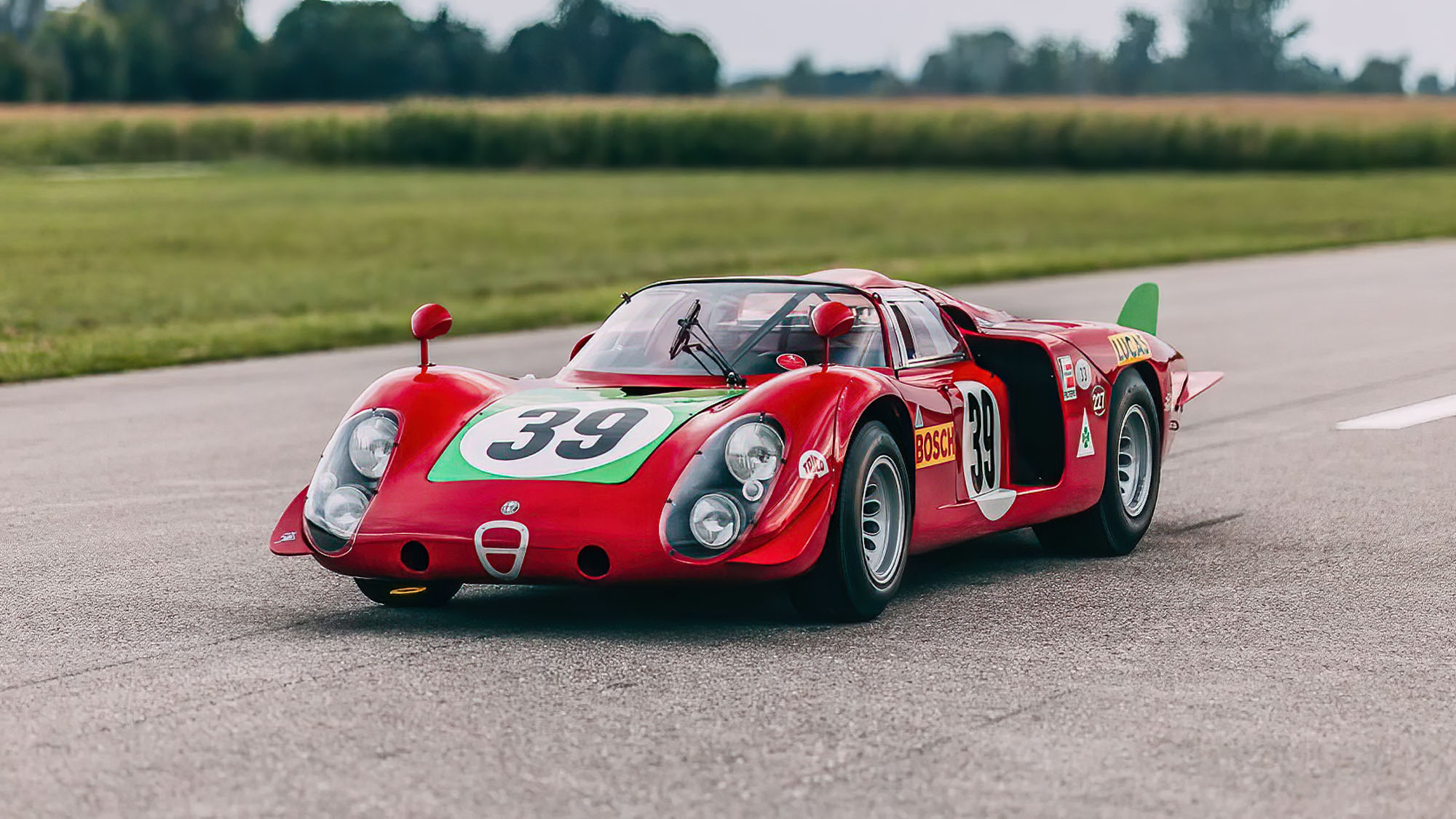History
Under the direction of Dr. Giuseppe Luraughi the development of an Alfa Romeo sports racing car became an important objective for Alfa Romeo in the mid-1960s. By pulling together the talents of Carlo Chiti and Lodovico Chizzola and their newly founded Auto-Delta company the company effectively developed a motorsport division. Initially Alfa Romeo commissioned Auto-Delta to produce 100 examples of the Giulia TZ, and ultimately the TZ2. The success of this program raised Auto-Delta’s credibility considerably within Alfa Romeo, and by 1965 under the direction of Chiti, Autodelta (now written as a single word) became a fully integrated part of Alfa Romeo, effectively as the factory Works team.
In the same period there was a great deal of flux in competition regulations, however the Prototype Championship soon began to supersede the GT car races which had been the focus of the early 1960s. The Tipo 33 emerged specifically from the fact that in 1966 and 1967 there were two separate championships. The Trophée des Constructeurs, designed for the prototype formula and designated ‘Group 6’, this was divided into two classes, above and below 2-litre displacement. The second championship, ‘Championat des Voitures de Sport’ required that at least fifty cars were homologated. Both series seemed to coexist however by 1967 it was increasingly clear that the prototype ‘Group 6’ category would dominate.
No Subscription? You’re missing out
Get immediate ad-free access to all our premium content.
Get Started



